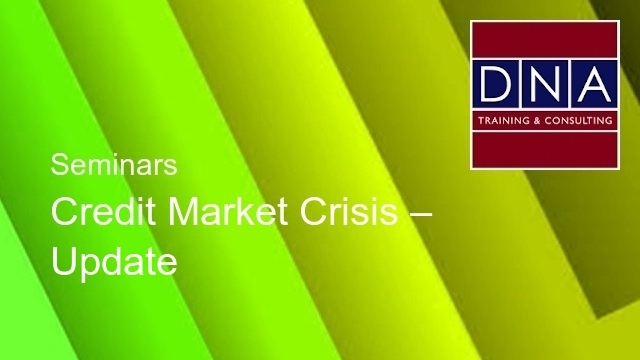SEMINAR LENGTH
1.5 days
SCHEDULE
SYNOPSIS
Despite the extensive coverage it has received, the current credit meltdown remains perhaps the least well understood of all financial crises in recent years. This is due in part to the central role of complex structured instruments and the myriad ways in which they are used to dissect credit, legal, market and liquidity risks, and to scatter them about the marketplace among equally complex investors, vehicles and other risk-takers.
This workshop is targeted at those who need a deeper understanding of the principal factors driving the crisis, from FI Bankers and structured finance specialists actively involved in the arranging of securitization transactions, to end-investors, risk managers, credit officers and regulators becoming increasingly nervous about their ability to identify the nerve centers of these complex arrangements.
The workshop begins by examining the key structural features of residential mortgage securities, including especially the subprime variety, and how the underlying risks are distributed throughout the marketplace by means of the techniques of tranching, synthetic risk transfer via credit default swaps, third-party credit enhancement and re-securitization via SIVs and CDOs.
The role of each principal player, the typical risks they assume, and the damage they have suffered and are likely to suffer are scrutinized in detail, including the arrangers, rating agencies, conduits, banks and other liquidity providers, monoline insurance companies, specialist credit funds and hedge funds.
The workshop continues by examining how a relatively localized problem involving a single asset class spilled over into the broader financial markets and brought about the demise of several leading financial institutions and a complete collapse in market confidence in the financial sector generally, especially its capital structure, liquidity and funding arrangements, business model and risk management practices. The various government bailouts around the world, especially in Europe and the United States, will be analyzed in detail and their likely impact examined.
The workshop concludes by tackling critical questions regarding the lessons to be learned from this crisis, and by identifying the most probable long-term changes in the structure and functioning of the financial markets, including the following:
- How much blame should be assigned to the credit rating agencies, and are there changes to the ratings process that might reduce the risk of repeats in the future?
- How accurate was the disclosure of FI exposures to subprime, whether direct or via CDOs, SIVs, or other vehicles?
- Who, if anybody, came closest to raising red flags at the right time?
- What lessons may be learned about the accuracy of fair value accounting and its meaningfulness in the context of very large exposures to illiquid instruments?
- What changes have become necessary in bank capital and liquidity regulation?
- Why were some institutions much better positioned than others to withstand the impact of the crisis and what lessons if any can we draw about their risk management practices?

